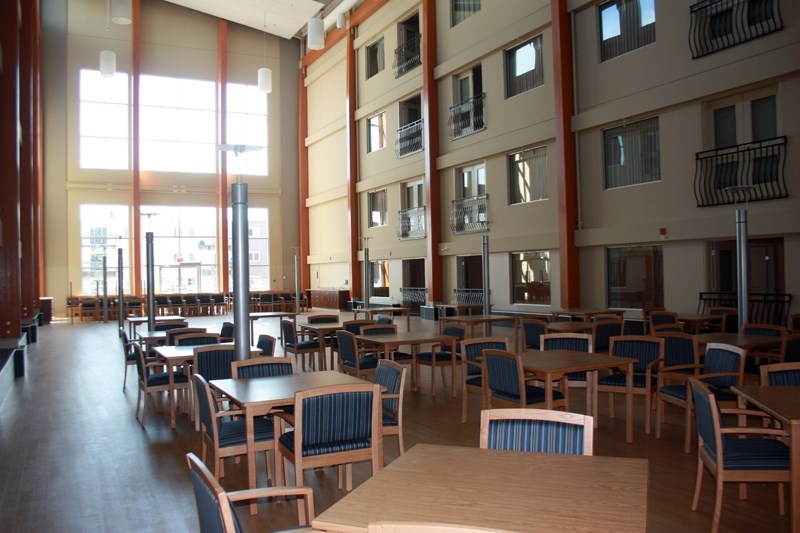Although the Pembina Lodge expansion is structurally ready for occupancy, new residents will have to wait to move in until the nurse call system is fully operational.
The expansion received its occupancy permit on Aug. 9, approximately 13 months after shovels first went into the ground to build the 68-unit facility, said Gord White, president of Integrated Management & Realty, the company that oversaw the project.
White explained the occupancy permit is the regulatory requirement any building must meet before people are allowed to move in.
“You have to get an occupancy permit from the jurisdiction the building’s in before you can actually put someone in a new building,” he said.
With that permit having been granted, White said any delays in moving people into the expansion are a result of decisions the Westlock Foundation makes.
Foundation chair David Truckey said the main delay in the move-in process is the status of the new nurse call system.
While Truckey admitted the building is structurally safe for occupancy, he and the rest of the board would be jeopardizing the safety of residents if they were to be moved in too soon.
“Until the nurse call system, which is an important component for residents’ safety, is in place and operational, I don’t think the board or anybody reasonably considers it to be safe,” he said.
There are a few parts of the system that need to be sorted out before residents can start moving in. The first is that each new resident would need to be hooked up to the system through his or her pendant.
The second, and more important, is that the system needs to have coverage through all quadrants of the building. It’s all well and good if every resident is on the system, Truckey said, but it wouldn’t be a safe living environment if the system can’t relay information from one area to another.
The nurse call system may be the current delay in getting residents moved in, but White said there were a few delays that arose during the construction process and just seemed to pile up.
The first delay a result of the wet weather in Westlock around the time of groundbreaking. The rain soaked into the ground, slowing down and even halting excavation for a while.
Once actual construction started, a major delay took place when the province modified its building code standards, White said.
He explained the province altered the maximum allowable height of a building based on its construction. Since the expansion was to be built completely from pre-assembled modular units, it would have been too tall when all the units were stacked on top of each other.
“To accommodate this new code component, we ended up having to build the main floor on site and have the other three floors built off site,” White said. “That allowed us to stay within the height regulations.”
That also meant a delay in ordering the modules from the manufacturer, as the project missed its slot in the queue, he said.
It also didn’t help that right around that time Slave Lake was being rebuilt and all the off-site manufacturers in Western Canada were making units for Slave Lake, he added.
It was a serious of unfortunate events, White said, but he understands that’s the nature of projects involving multiple parties.
“We’re never happy that we don’t hit our schedules, but sometimes there are things that preclude that and it can’t be helped,” he said.



